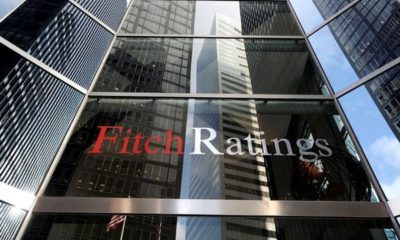- Business Activity Grew at Slower Pace Across Africa in January
Business activities grew at a slower pace in most African nations surveyed by Stanbic Bank in January.
According to the survey, business output across Kenyan private sector stood at 52.9 in January, slightly below the 52.9 recorded in December. Still, the second largest reading since December 2016.
Input cost accelerated at the fastest pace since September 2015, however, the high purchasing price did not deter consumer spending as it surged to the highest level since December 2016.
In Uganda, Purchasing Managers’ Index for private sector expanded at 52 in January, also below the 54.3 in December. While this was the twelfth consecutive expansion, it also indicates sustained growth.
Jibran Qureishi, the Regional Economist at Stanbic Bank said: “We expect both an improvement in agricultural productivity and an increase in public investment in infrastructure to support economic activity over the coming year, which is why we see GDP growth expanding by 5.6% in Uganda in 2018.”
Ghana’s private sector activity grew at 52.6 in January, the weakest growth since September 2016 and lower than the 53.5 recorded in December 2017 but consistent with economic condition.
According to Ayomide Mejabi, an Economist at Stanbic Bank, “After improving at a really strong pace for most of 2017, the Ghanaian private sector’s growth slowed moderately in January. However, at 52.6 the headline PMI still indicates that business conditions remain healthy in Ghana. It is our expectation that the economy should continue benefitting from expansion in oil production as well as a more favourable credit environment. As such, we expect that the economy should grow by at least 7.0 percent year on year over the course of the next two years.”
In South Africa, private sector remained in contraction, the sector grew by 49, below the 50 that separates expansion from contraction. However, this was higher than the 48.4 recorded in the last month of 2017. Output plunged to the lowest in 10 months, while new business declined for the sixth month running and client demand nosedive.
Also, in Zambia output expanded at a slower pace in January, expanding at 50.7. Below the 52.9 from the preceding month. This was attributed to the cholera outbreak in the small country.
Victor Chileshe, the Head of Global Markets at Stanbic Bank said: “The effects of the cholera outbreak and the measures taken thereafter by government have had a significant impact on business activity in January. Higher purchase costs are likely to have largely been driven by a strong Rand. Rand has appreciated by 15% over last three months. The Rand is a significant component of Zambia’s import basket.”
In Nigeria, the business activity in the private sector grew to the highest in 37 months. The Purchasing Managers’ Index grew at 57.3, up from 56.8 in December. The strongest rate of expansion in more than three years.
Ayomide Mejabi, an Economist at Stanbic IBTC Bank said: “The strong expansion in the Nigerian private sector as indicated by the January 2018 headline PMI is in line with our expectation of more robust real GDP growth this year. At 57.3, the PMI rose from an average of 56.0 in Q4:17 and 54.9 in Q3:17, mainly driven by the substantial rise in output levels with the output PMI rising to 64.8 from 60.7 (on average) in Q4:17. New orders also rose to 62.5 from 61.2 in December and 53.9 in January 2017.”
“Admittedly, our expectation of a 2.5 percent year-on-year growth in 2018 mainly reflects our confidence that the oil sector will remain supportive. That said, the moderate signs of macroeconomic rebalancing which were evident in 2017 suggests that there are upside risks to our base growth forecast. Starting from Q4:17, it is expected that the non-oil sector will start delivering growth after it remained in contractionary territory in H1:17.”
“It was strange that many non-oil sectors contracted between May and September 2017 despite an improvement in FX liquidity. The effective easing in monetary policy since then should prove supportive to growth in 2018.”

 Naira3 weeks ago
Naira3 weeks ago
 News4 weeks ago
News4 weeks ago
 Naira4 weeks ago
Naira4 weeks ago
 Naira3 weeks ago
Naira3 weeks ago
 Jobs3 weeks ago
Jobs3 weeks ago
 Travel3 weeks ago
Travel3 weeks ago
 Naira3 weeks ago
Naira3 weeks ago
 Investment4 weeks ago
Investment4 weeks ago






























